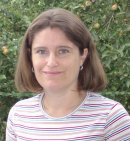The Project
Physical and technological approaches to the understanding and correction of myopia and presbyopia.
Winner

Susana Marcos Celestino
Consejo Superior de Investigaciones Científicas
Instituto de Óptica “Daza de Valdés”
Madrid, Spain
www.csic.es
A graduate of the University of Salamanca, Spain, with a B.S and M.Sc in Physics and a Ph.D in Applied Physics, Susana Marcos, 35 years old, completed her postdoctoral training in vision and vision optics at the Schepens Eye Research Institute, Boston, MA, USA. From 1997-2000, she was Research Fellow in Ophthalmology at the Department of Opthalmology. Harvard Medical School, Boston., MA, USA, funded by a Fulbright and a Human Frontier Science postdoctoral fellowship. Since 1999, Marcos has been a Faculty Research Scientist at the Instituto de Optica, Consejo Superior de Investigaciones Científicas, Madrid, Spain. She is the winner of seven awards and prizes including the Adolph Lomb Medal from the Optical Society of America in 2002
Award
€1,122,735
Project Description
This project will investigate, from a multidisciplinary approach, the mechanisms of development of myopia(*) and presbyopia(**), as well as current methods for their correction.
We will study possible factors that contribute to the failure of the fine tuning of the eye’s refractive components (cornea and lens) and the axial ocular length, which results in myopia. In addition, we will investigate the optical changes occurring in the crystalline lens that lead to a loss of the accommodation mechanism, ie, the ability to focus to near and far targets which results in presbyopia. To date there is no definitive treatment for these conditions, primarily because their etiology is not completely understood. There are, however, methods for compensation, which need a better understanding and improvements in order to achieve the most appropriate correction for each individual eye.
We will study, in particular, corneal refractive surgery for the correction of refractive errors, and multifocal devices (intraocular lenses and contact lenses) to expand the focus range in presbyopic eyes. The proposal will involve the development of biomedical imaging and optical technologies for the non-invasive assessment of the anterior segment of the eye. These techniques include wavefront sensing, Purkinje imaging for measurements of tilts and decentrations of the crystalline lens (or intraocular lenses), Scheimpflug imaging and optical coherence tomography. This new technology will provide detailed and combined information of the optical and physical properties of the ocular components and their interactions on individual myopic and presbyopic human eyes.
An experimental model of myopia will allow us to test hypotheses on the relationship between aberrations and myopia development, as well as longitudinal measurements. Computational, physical and biological models of corneal laser ablation and corneal biomechanics will allow a deeper understanding of the changes induced by laser refractive surgery. Psychophysical measurements in combination with optical measurements will provide clues into the optical and visual basis for multifocality.
(*) Definition - Myopia:
Myopia is a refractive defect of the eye in which light focuses in front of the retina. Those with myopia are often described as nearsighted or short-sighted in that they typically can see nearby objects clearly but distant objects appear blurred. The opposite of myopia is hyperopia or "farsightedness". Myopia is the most common eyesight problem in the world. (Source: Wikipedia)
(**) Definition - Presbyopia:
Presbyopia is the eye's diminished power of accommodation that occurs with aging. The most widely held theory is that it arises from the loss of elasticity of the crystalline lens, although changes in the lens' curvature from continual growth and loss of power of the ciliary muscles (the muscles that bend and straighten the lens) have also been postulated as its cause. Presbyopia is not a disease as such, but a condition that affects everyone at a certain age. (Source: Wikipedia)

